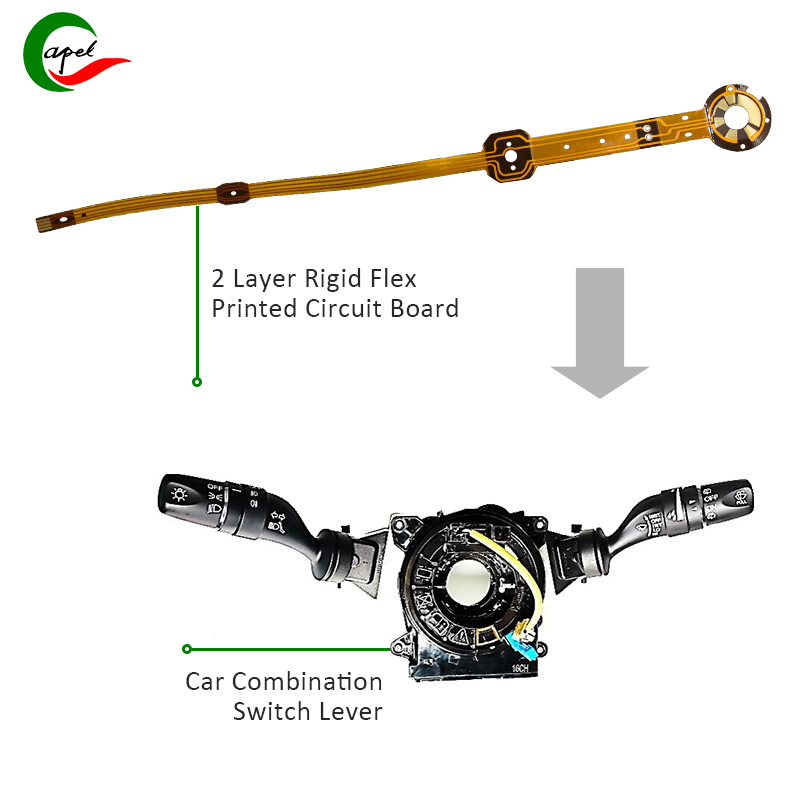Introduction: HDI PCB Prototype and Fabrication – Revolutionizing Automotive and EV Electronics
In the growing automotive and electric vehicle industries, demand for high-performance, reliable and compact electronic components continues to surge. As an HDI PCB engineer with over 15 years of experience in this dynamic field, I have witnessed and contributed to significant advancements that have reshaped the industry. High-density interconnect (HDI) technology has become a key enabler in meeting the stringent requirements of automotive and electric vehicle applications, revolutionizing the way electronic components are designed, prototyped and manufactured.
From interconnected systems controlling advanced driver assistance features to power management units in electric vehicles, HDI PCBs play a key role in optimizing the performance, size and reliability of electronic components. In this article, we’ll delve into the fundamental aspects of HDI PCB prototyping and manufacturing and explore successful case studies that have overcome industry-specific challenges, demonstrating the transformative impact of HDI technology in the automotive and electric vehicle sectors.
HDI PCB Prototype and Manufacturing: Driving automotive and electric vehicle electronics innovation
The automotive and electric vehicle industries require electronic components that can withstand harsh environmental conditions, provide enhanced functionality, and meet stringent safety standards while being cost-effective and compact. HDI PCB technology provides a compelling solution to these challenges by enabling higher component density, reduced signal interference, and improved thermal management, thereby laying a solid foundation for robust and reliable electronic systems in vehicles.
Advances in HDI PCB design and manufacturing technology have allowed for a significant increase in the number of components that can fit within the limited space of modern vehicles. HDI PCB’s ability to incorporate micro, blind and buried vias and high-density routing facilitates the development of compact multi-layer circuit boards without sacrificing performance or reliability.
Case Study 1: HDI PCB Prototype and Making Enhances Signal Integrity and Miniaturization in Advanced Driver Assistance
Systems (ADAS)
One of the major challenges in ADAS development is the need for compact electronic control units (ECUs) that can process and transmit large amounts of sensor data in real time while ensuring high signal integrity. In this case study, a leading automotive manufacturer contacted our team to resolve miniaturization and signal integrity issues in their ADAS ECUs.
By leveraging advanced HDI circuit board prototyping and manufacturing technology, we are able to design multi-layer HDI PCBs with microvias to create high-density interconnects, significantly reducing the size of the ECU without compromising signal integrity. The use of microvias not only helps enhance wiring capabilities, but also helps improve thermal management, ensuring reliable operation of ADAS ECUs in harsh automotive environments.
The successful integration of HDI technology significantly reduces the ADAS ECU footprint, freeing up valuable space within the vehicle while maintaining the required processing power and signal integrity. This case study highlights the important role of HDI PCBs in meeting the miniaturization and performance needs of advanced electronic systems in the automotive industry.
Case study 2: HDI PCB prototype and Production Enables high power density and thermal management of electric vehicle
power electronics
Electric vehicles represent a paradigm shift in the automotive industry, with power management units playing a vital role in ensuring efficient energy conversion, distribution and control. When a leading electric vehicle manufacturer sought to increase the power density and thermal management capabilities of its on-board charger modules, our team was tasked with developing a solution that could meet growing power demands while resolving thermal issues.
By leveraging advanced HDI PCB technology, including embedded vias and thermal vias, we engineer a robust multi-layer PCB design that effectively dissipates heat generated by high-power components, helping to enhance thermal management and reliability. The implementation of embedded vias helps optimize signal routing, allowing the onboard charger module to deliver high power output without compromising board integrity or performance.
In addition, the high temperature resistance and efficient heat dissipation characteristics of HDI PCB design significantly increase the power density of on-board charging modules, enabling a more compact and energy-saving solution. The successful integration of HDI technology in EV power electronics development highlights its critical role in solving the thermal and power density challenges prevalent in the EV industry.
HDI PCB Prototype and Manufacturing Process
The Future of HDI PCB Prototyping and Fabrication for the Automotive and EV Industry
As the automotive and electric vehicle industries continue to adopt cutting-edge technologies and innovations, the need for advanced electronic systems that embodies higher performance, reliability and miniaturization will continue. With its ability to enable high-density interconnects, improved thermal management, and enhanced signal integrity, HDI PCB technology is expected to play an even more critical role in shaping the future of automotive and electric vehicle electronics.
Continued advances in HDI PCB prototyping and fabrication technology, coupled with the emergence of new materials and design methods, provide exciting opportunities to further optimize the performance, reliability and manufacturability of electronic components for automotive and electric vehicle applications. By working closely with industry partners and taking a proactive approach to innovation, HDI PCB engineers can continue to solve complex challenges and drive unprecedented advancements in electronic systems for the automotive and electric vehicle industries.
In summary, the transformative impact of HDI PCB technology in the automotive and EV industries is evident through successful case studies that demonstrate its ability to solve industry-specific challenges related to miniaturization, thermal management, and signal integrity. As an experienced HDI PCB engineer, I believe the continued importance of HDI technology as a key enabler of innovation heralds a new era of compact, reliable and high-performance advanced electronic systems for automotive and electric vehicles.
Post time: Jan-25-2024
Back







